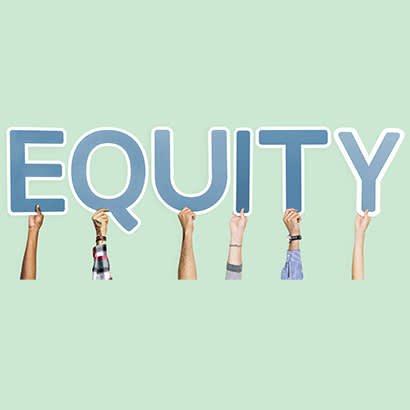
For an enhanced digital experience, read this story in the ezine.
The compensatory equity and equality perspectives
Equity (i.e., fairness) in allocation of resources and services can be operationalized in four different ways: compensatory equity, equality, market/benefit equity and demand. The principles underlying each of them are very different. Which of them does your city embrace? This month’s column describes the first two of these operationalizations. The second two will be addressed in next month’s column.
Compensatory Equity
NRPA’s equity pillar states, “We must put equity at the center of all we do.” Many interpret the intent of the pillar to be that economically disadvantaged groups, areas or individuals should receive extra increments of services beyond those delivered to the rest of a community. Thus, an unequal amount of expenditures are allocated to personnel, equipment, facilities and services for those residents.
This is a social goal. Its advocates argue that people who are disadvantaged by receiving a relatively small amount of resources through the market mechanism of the private sector should receive more resources from the public sector to facilitate their access to basic services. This perspective views park and recreation services as one of the vehicles for intentionally alleviating inequities in service access that may exist in disadvantaged areas.
The implied expectation is that additional increments of resources will result in more equal outcomes. This may be measured, for example, by achieving similar participation rates in recreation activities in all groups/areas in a city. However, providing additional resources does not necessarily mean that all sections of the community will use them. It is important to differentiate between whether people should participate (equal outcomes) or should be able to participate (equal opportunity).
While compensatory equity is conceptually appealing to many in the park and recreation field, three factors make it challenging to operationalize. First, establishing criteria that defines who or which areas of a community qualify as economically disadvantaged is likely to be controversial.
Second, it is difficult to measure recreation benefits and compare them across different groups/areas.
Third, the magnitude of the cost needed to raise the engagement levels of disadvantaged, relatively unresponsive target groups is likely to be both substantial and unknown. An analogy with the education system helps illustrate this challenge. Students are not guaranteed equal outcomes in terms of skill acquisition, grades or knowledge. Rather, it is expected that they will be guaranteed equal opportunity to learn.
Placed in the context of parks and recreation, the above example suggests that equity should not be measured by the number of people in an area who visit a park. Instead, it should be measured by the number of residents who live within walking distance of a park.
For elected officials and administrators who often justify their “success” by how many are served or the cost per participant, committing to compensatory equity is daunting. In these contexts, a politically palatable approach often used is to argue that inequities are not the central issue. Rather, improving service delivery to disadvantaged groups — even if the strategy does nothing to alleviate inequalities — is a legitimate compensatory equity strategy.
Equality
The equality perspective perhaps stems from Thomas Jefferson’s iconic phrase in the Declaration of Independence: “all men are created equal,” and the 14th Amendment’s clause guaranteeing all citizens “the equal protection of the laws.”
Adoption of the equality operationalization of equity directs that policy and service delivery decisions should deliver equal annual appropriations and services to all groups and areas. However, if they are applied to existing patterns of service delivery that are perceived to be inequitable, then they merely reinforce existing inequities. This was illustrated by an analysis of the use of Proposition K funds in Los Angeles. These funds generated $25 million per year for 30 years from a designated property tax to alleviate inadequacies in underfunded areas. An evaluation of the program based primarily on geographic information system analyses concluded:
Low-income and concentrated poverty areas as well as neighborhoods dominated by Latinos, African Americans and Asian-Pacific Islanders, have dramatically lower levels of access to park resources than [w]hite dominated areas of the city. Proposition K funding patterns often exacerbate rather than ameliorate existing inequalities in park and open space resource distributions in the [c]ity, since much of the funding was invested in improvements to existing facilities…. Much of the $25 million a year was not allocated to the areas where it is most needed.
In next month’s column, we will explore the market/benefit equity and demand interpretations of equity.
John L. Crompton, Ph.D., is a University Distinguished Professor, Regents Professor and Presidential Professor for Teaching Excellence in the Department of Recreation, Park and Tourism Sciences at Texas A&M University and an elected Councilmember for the City of College Station.

